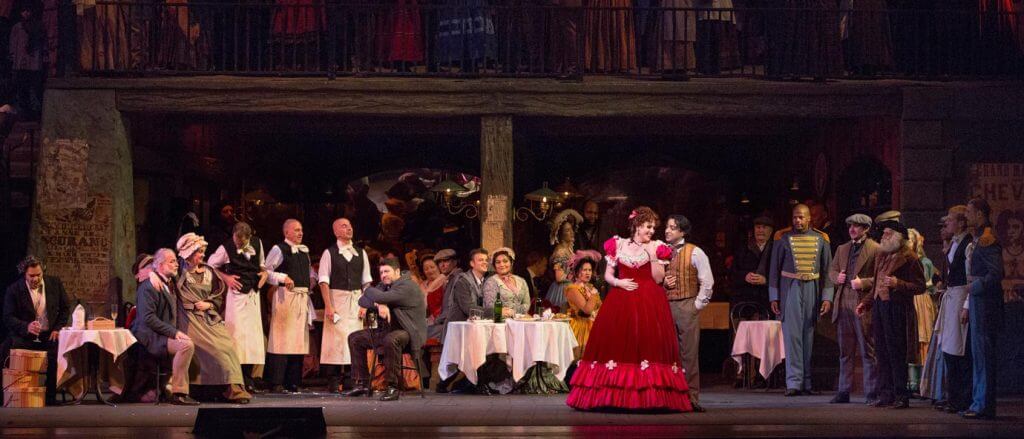Overview
The world’s most popular opera returns in Franco Zeffirelli’s classic production, with a series of exciting casts. Angel Blue, Anita Hartig, and Sonya Yoncheva share the role of the fragile Mimì, with Dmytro Popov, Russell Thomas, and Michael Fabiano alternating as the poet Rodolfo. Alexander Soddy and Marco Armiliato share conducting duties.
World premiere: Teatro Regio, Turin, 1896. Met company premiere: Los Angeles (on tour), November 9, 1900. La Bohème, the passionate, timeless, and indelible story of love among young artists in Paris, can stake its claim as the world’s most popular opera. It has a marvellous ability to make a powerful first impression and to reveal unsuspected treasures after dozens of hearings. At first glance, La Bohème is the definitive depiction of the joys and sorrows of love and loss; on closer inspection, it reveals the deep emotional significance hidden in the trivial things—a bonnet, an old overcoat, a chance meeting with a neighbor—that make up our everyday lives.
Creators
 Giacomo Puccini (1858–1924) was immensely popular in his own lifetime, and his mature works remain staples in the repertory of most of the world’s opera companies. His librettists for La Bohème, Giuseppe Giacosa (1847–1906) andLuigi Illica (1857–1919), also collaborated with him on his next two operas, Tosca and Madama Butterfly. Giacosa, a dramatist, was responsible for the stories and Illica, a poet, worked primarily on the words themselves.
Giacomo Puccini (1858–1924) was immensely popular in his own lifetime, and his mature works remain staples in the repertory of most of the world’s opera companies. His librettists for La Bohème, Giuseppe Giacosa (1847–1906) andLuigi Illica (1857–1919), also collaborated with him on his next two operas, Tosca and Madama Butterfly. Giacosa, a dramatist, was responsible for the stories and Illica, a poet, worked primarily on the words themselves.
PRODUCTION Franco Zeffirelli
SET DESIGNER Franco Zeffirelli
COSTUME DESIGNER Peter J. Hall
LIGHTING DESIGNER Gil Wechsler
REVIVAL STAGE DIRECTOR Gregory Keller
COMPOSER Giacomo Puccini
Setting

The libretto sets the action in Paris, circa 1830. This is not a random setting, but rather reflects the issues and concerns of a particular time when, following the upheavals of revolution and war, French artists had lost their traditional support base of aristocracy and church. The story centres on self-conscious youth at odds with mainstream society—a Bohemian ambience that is clearly recognisable in any modern urban centre. La Bohème captures this ethos in its earliest days.
Music
Lyrical and touchingly beautiful, the score of La Bohème exerts an immediate emotional pull. Many of its most memorable melodies are built incrementally, with small intervals between the notes that carry the listener with them on their lyrical path. This is a distinct contrast to the grand leaps and dives that earlier operas often depended on for emotional effect. La Bohème’s melodic structure perfectly captures the “small people” (as Puccini called them) of the drama and the details of everyday life.




